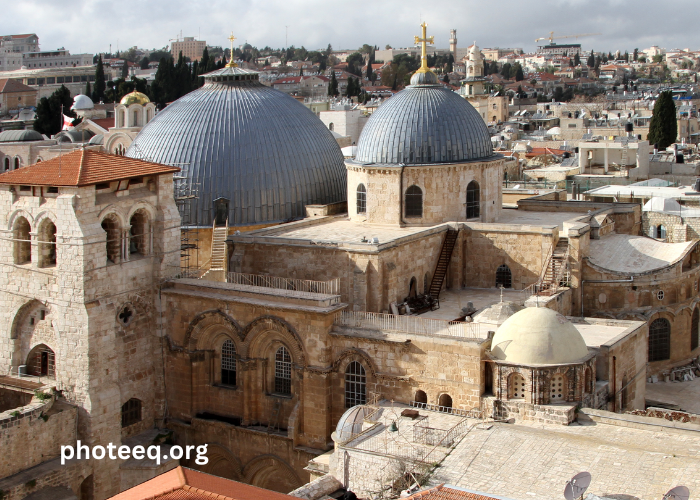The Church of the Holy Sepulchre, also known as the Church of the Resurrection, is a renowned religious site located in the Old City of Jerusalem. This ancient church holds immense significance for Christians worldwide, as it is believed to be the site of Jesus Christ’s crucifixion, burial, and resurrection. As one of the holiest places in Christianity, the Church of the Holy Sepulchre attracts millions of pilgrims and visitors each year, all seeking to experience the profound spiritual and historical significance of this sacred place.
Importance and Significance of the Church of the Holy Sepulchre
The Church of the Holy Sepulchre is a testament to the rich and complex history of Christianity. This iconic structure stands as a symbol of the pivotal events that shaped the Christian faith, serving as a physical embodiment of the core beliefs and teachings of the religion. The church’s significance lies in its role as the site where Jesus Christ was crucified, buried, and ultimately resurrected, making it a profoundly sacred location for Christians worldwide.
Architecture and Design of the Church of the Holy Sepulchre
The Church of the Holy Sepulchre is a remarkable architectural masterpiece, blending various styles and influences over the centuries. The church’s design is a harmonious fusion of Byzantine, Crusader, and Ottoman elements, reflecting the complex history and diverse cultural influences that have shaped this iconic structure. From the grand domed roofs to the intricate mosaics and ornate decorations, the church’s architecture is a true feast for the eyes, captivating visitors with its stunning visual splendor.
Exploring the Interior of the Church of the Holy Sepulchre
Stepping inside the Church of the Holy Sepulchre is a truly awe-inspiring experience. The vast, dimly lit interior is adorned with intricate mosaics, elaborate chandeliers, and ornate religious artwork, creating an atmosphere of reverence and spiritual contemplation. Visitors can explore the various chapels and shrines within the church, each with its own unique history and significance, offering a deeper understanding of the site’s religious and cultural significance.
Famous Religious Sites within the Church of the Holy Sepulchre
The Church of the Holy Sepulchre is home to several renowned religious sites, each with its own profound meaning and importance. These include the Stone of Unction, where Jesus’ body was prepared for burial; the Edicule, which houses the tomb of Jesus; and the Calvary, the site of the Crucifixion. Visitors can engage in prayer, reflection, and reverence at these sacred locations, immersing themselves in the rich history and spiritual significance of the church.
Capturing the Beauty of the Church of the Holy Sepulchre through Photography
The Church of the Holy Sepulchre is a true feast for the senses, and its captivating beauty lends itself perfectly to photographic exploration. From the intricate architectural details to the ethereal lighting and the profound religious atmosphere, there are countless opportunities to capture stunning and evocative images within the church’s walls. Whether you are a professional photographer or an enthusiastic amateur, the Church of the Holy Sepulchre offers a wealth of photographic possibilities, allowing you to immortalize the beauty and significance of this sacred site.
Tips for Taking Stunning Photos at the Church of the Holy Sepulchre
To capture the true essence of the Church of the Holy Sepulchre through your photography, consider the following tips:
- Respect the Sacred Space: Remember that the church is a place of worship, so it’s important to be mindful of your surroundings and the religious significance of the site. Avoid disrupting services or disturbing other visitors.
- Utilize Natural Lighting: The church’s interior is often dimly lit, which can create a stunning and atmospheric effect. Experiment with different angles and perspectives to make the most of the available natural light.
- Focus on Details: The church is filled with intricate architectural elements, religious artwork, and subtle details that are ripe for photographic exploration. Zoom in on these elements to capture the depth and complexity of the church’s design.
- Capture the Crowds: The Church of the Holy Sepulchre is often bustling with visitors, pilgrims, and worshippers. Use the crowds to your advantage, capturing the energy and liveliness of the space.
- Experiment with Composition: Play with different compositional techniques, such as leading lines, symmetry, and framing, to create visually striking and compelling images.
Sharing Your Church of the Holy Sepulchre Photos Online
Once you’ve captured the beauty and significance of the Church of the Holy Sepulchre through your photography, consider sharing your images with the world. Social media platforms like Instagram, Facebook, and Flickr offer excellent opportunities to showcase your work and connect with a global audience. Additionally, you can consider submitting your photos to travel and photography websites, magazines, or even entering them into relevant photography contests.
If you’re inspired to capture the stunning beauty of the Church of the Holy Sepulchre, consider booking a guided photography tour or workshop to enhance your experience and learn from expert photographers. With the right guidance and techniques, you can create breathtaking images that will forever immortalize the spiritual and historical significance of this sacred site.
Conclusion and Final Thoughts on the Church of the Holy Sepulchre
The Church of the Holy Sepulchre is a truly remarkable and awe-inspiring place, a testament to the enduring power of faith, history, and human creativity. Whether you are a devout Christian, a passionate photographer, or simply a curious traveler, this sacred site offers a profound and transformative experience, one that will leave a lasting impression on all who visit. Through your photography, you have the opportunity to share the beauty and significance of the Church of the Holy Sepulchre with the world, inspiring others to explore this remarkable and sacred place for themselves.





